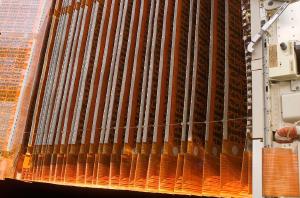Blog
Know When to Fold Them
18 March 2015
Most of the spacecraft we have are powered by solar panels. The amount of power a spacecraft can draw from a solar panel depends upon the efficiency of the photovoltaic cells within the panel, and the amount of sunlight the panel is exposed to. One way to get more power (or to have sufficient power far from the Sun) is to make ever larger solar panels. The problem with that strategy is that large panels must fit into a package small enough to be launched in a rocket. This means solar panels must be folded for launch, and then unfolded in space.
 NASA
NASAThere are lots of ways to fold a solar panel, but so far most of methods are fairly straightforward. Either fold a panel accordion-style, or layered so they unfold like the top of a box. These methods are tried and true, but not particularly efficient for very large panels. So engineers have started to look for more innovative folding methods, such as those inspired by origami. While the art of paper folding is often associated with paper cranes or airplanes, it also provides ways to fold large sheets into compact forms, such as the prototype design featured in the video above.
While there are still challenges to overcome, new methods of folding solar panels will likely find their way into spacecraft design. With more solar power we can perform a wider range of experiments and use solar panels in more distant regions of the solar system.